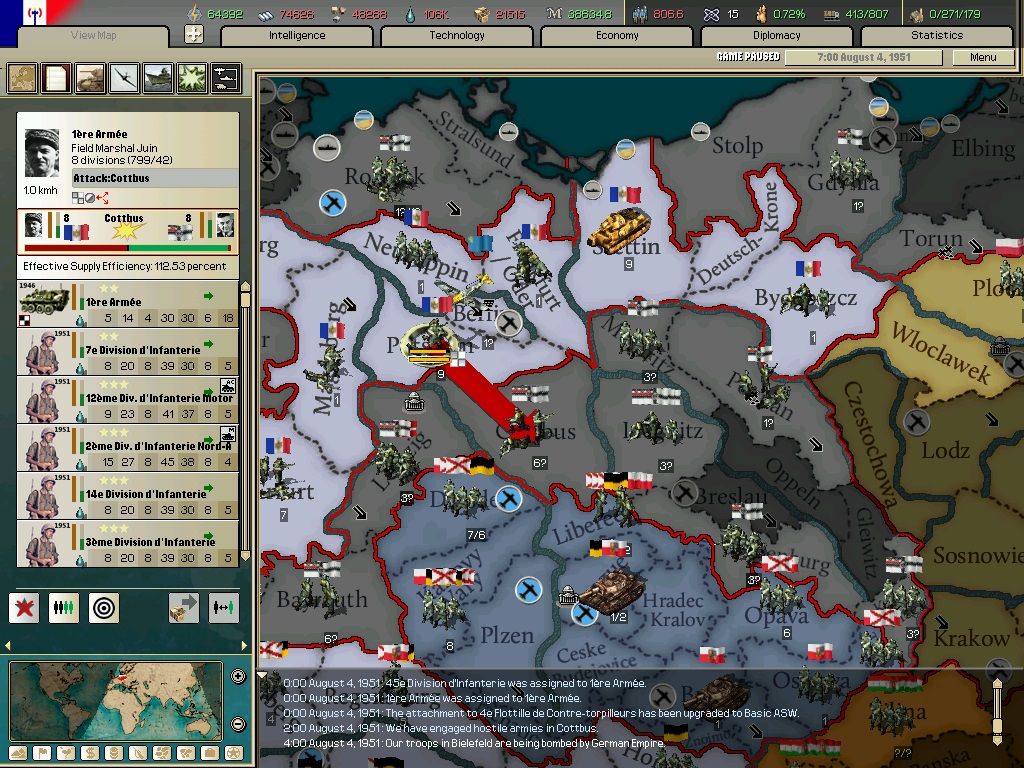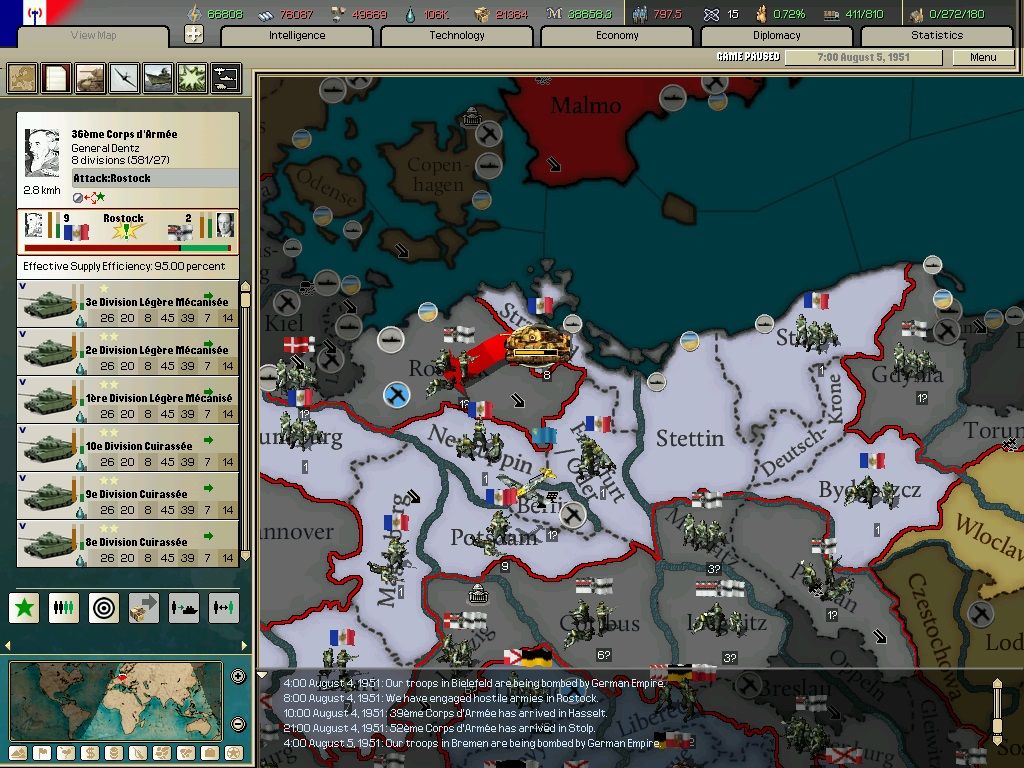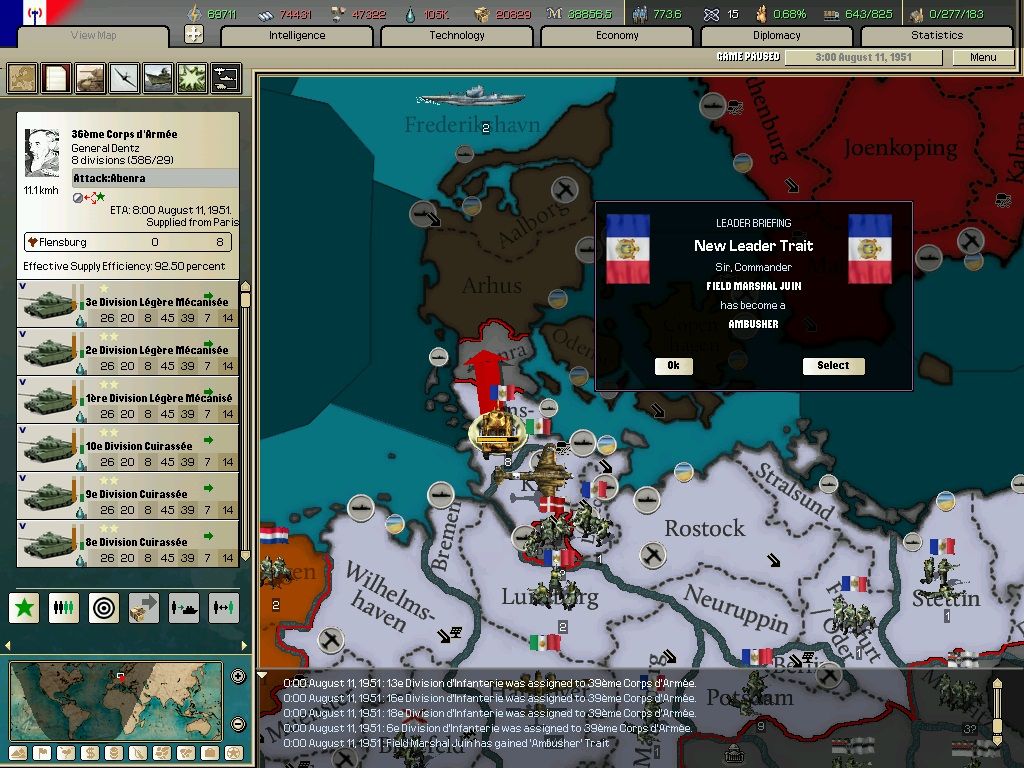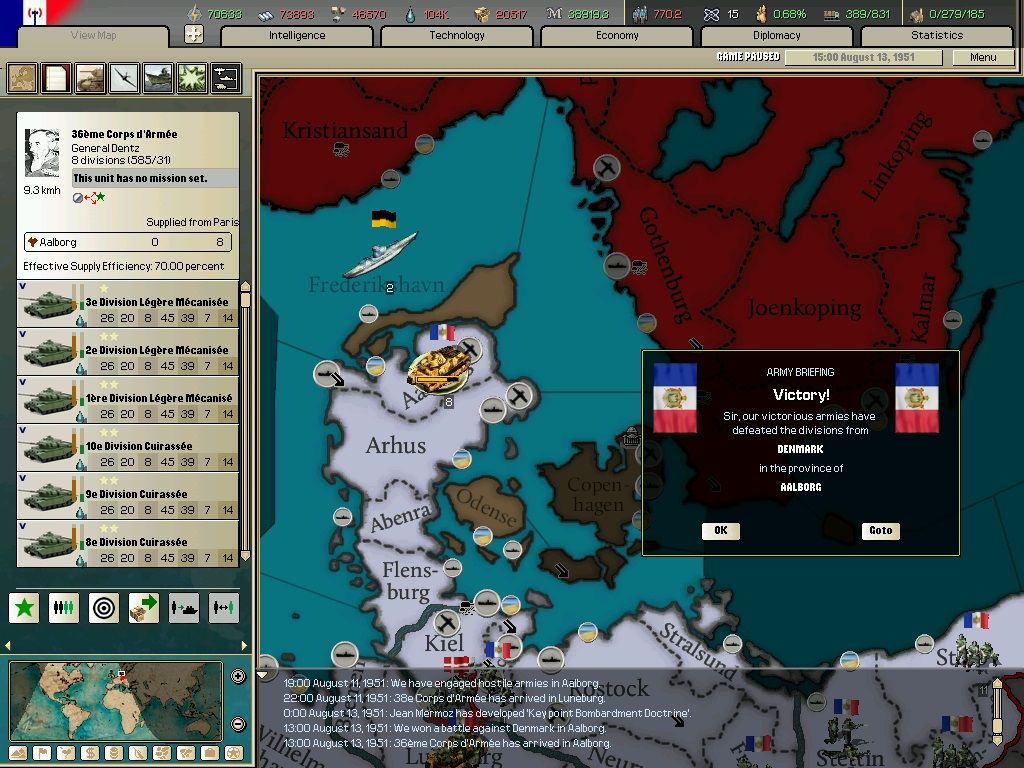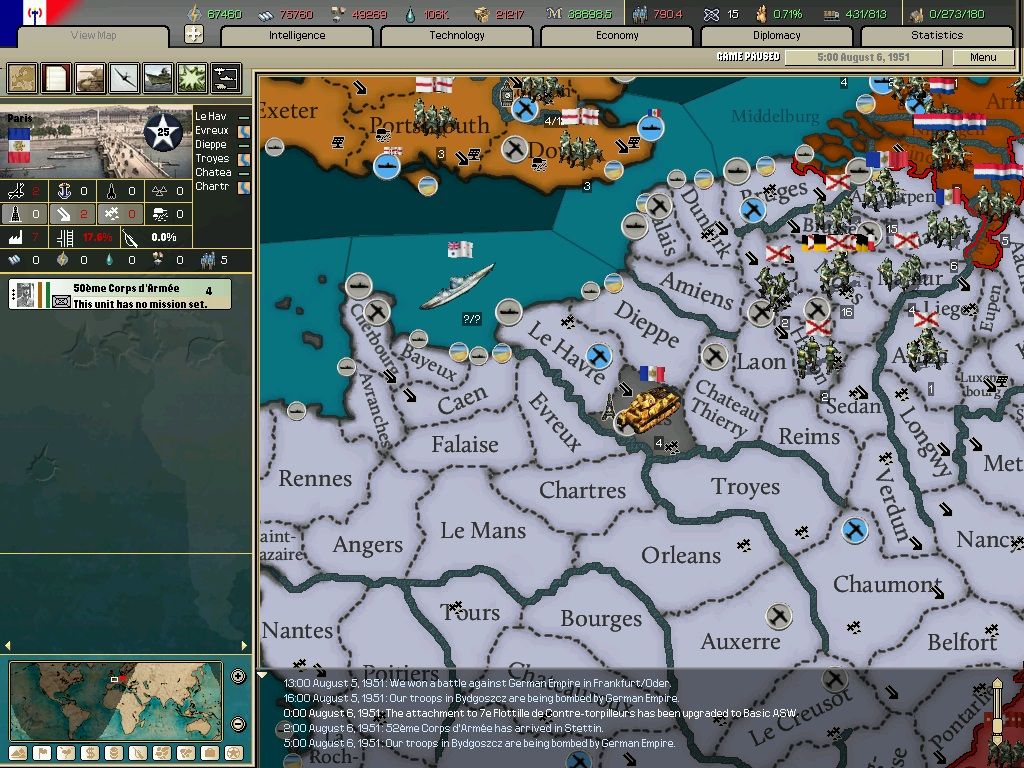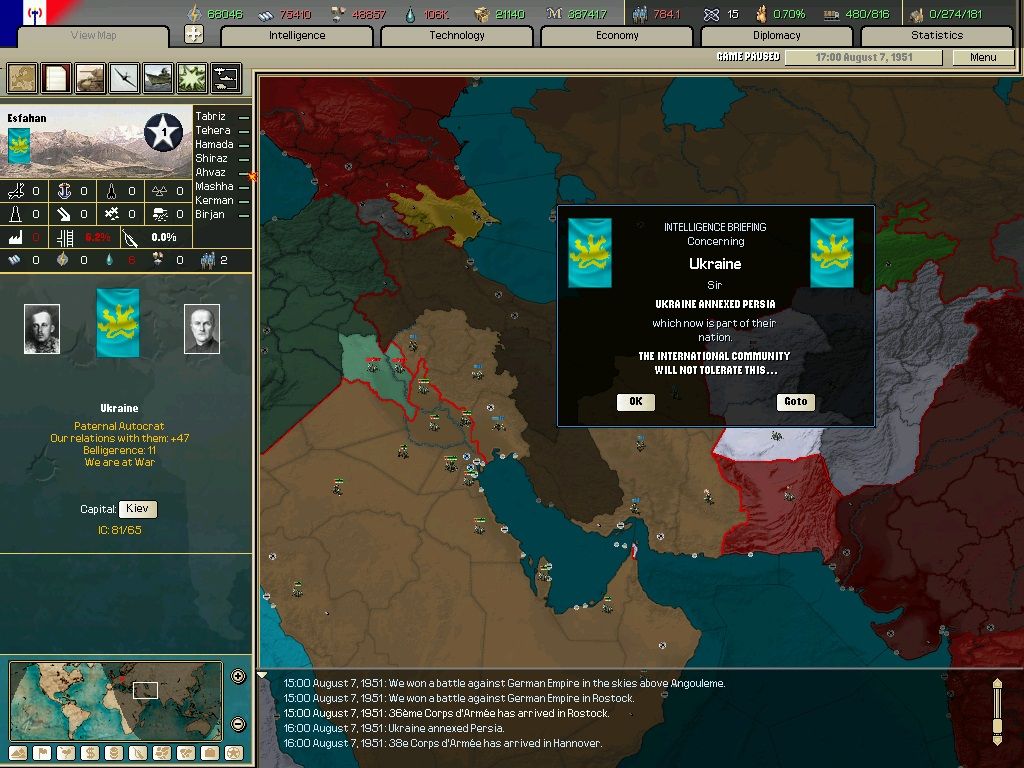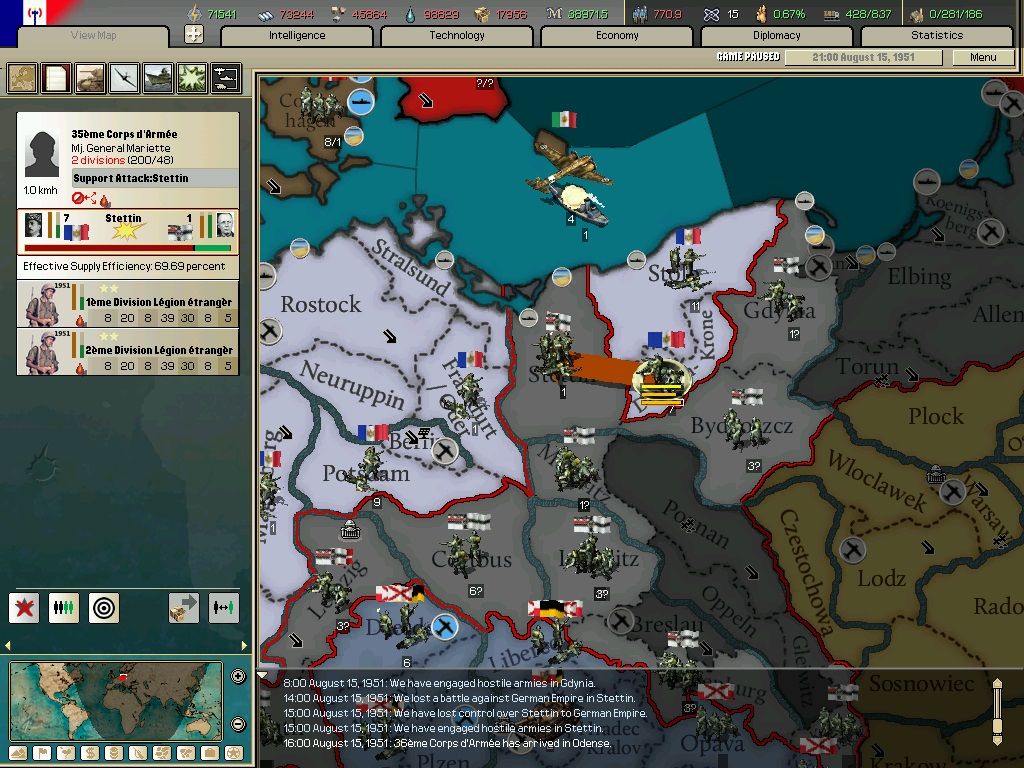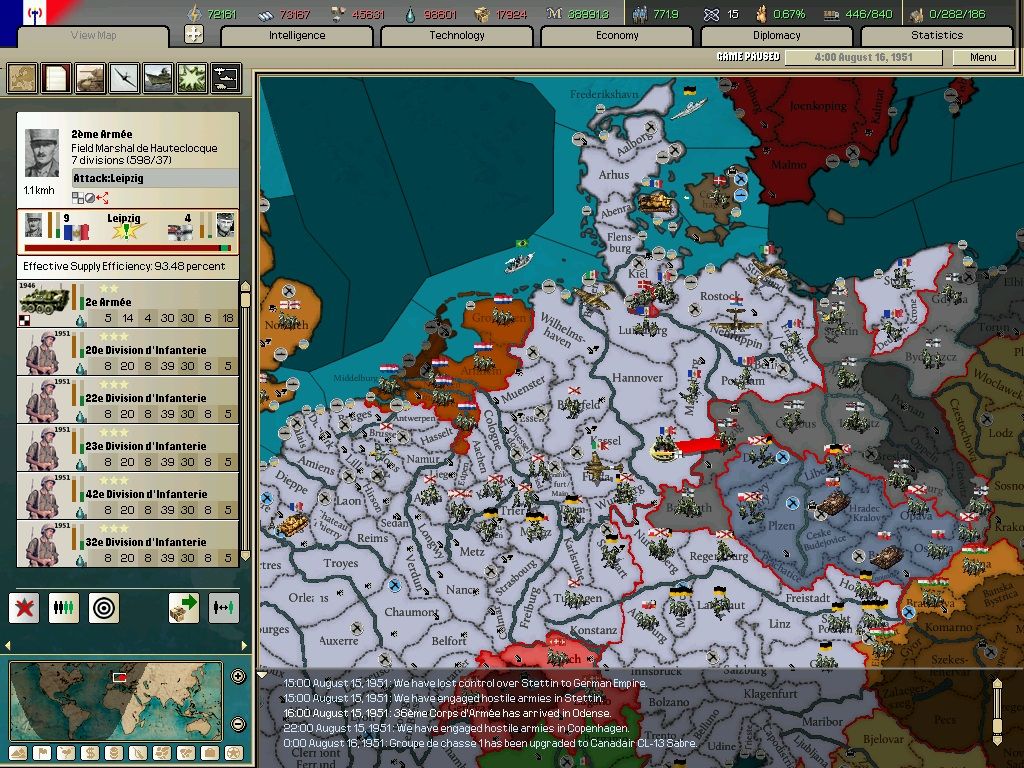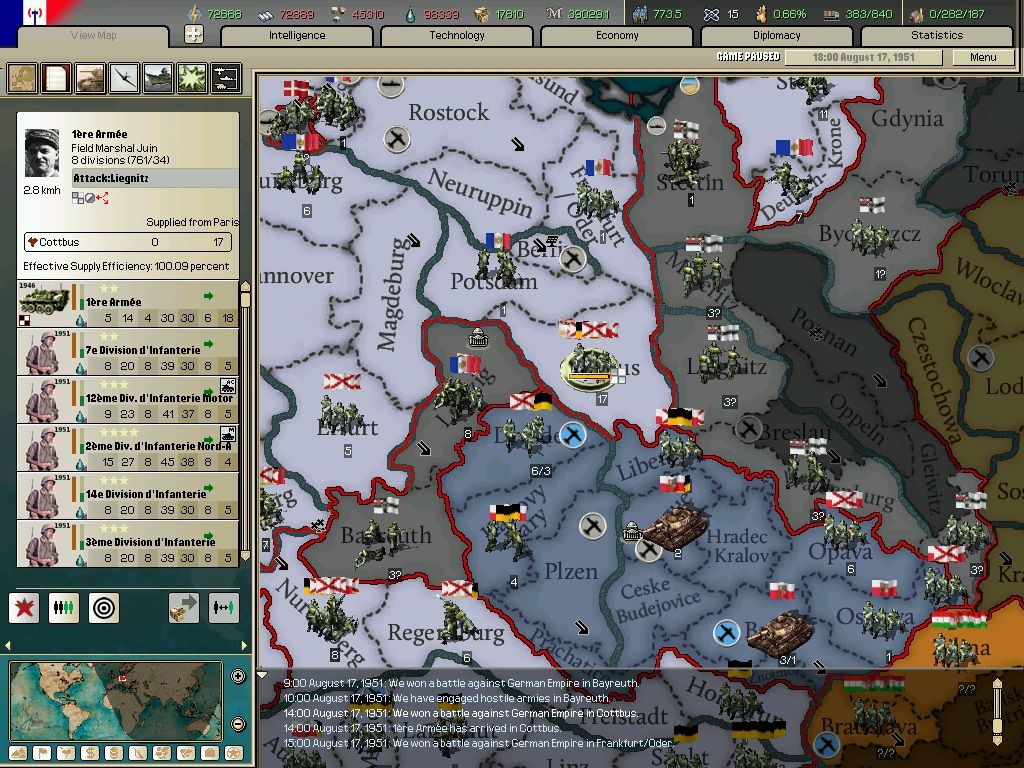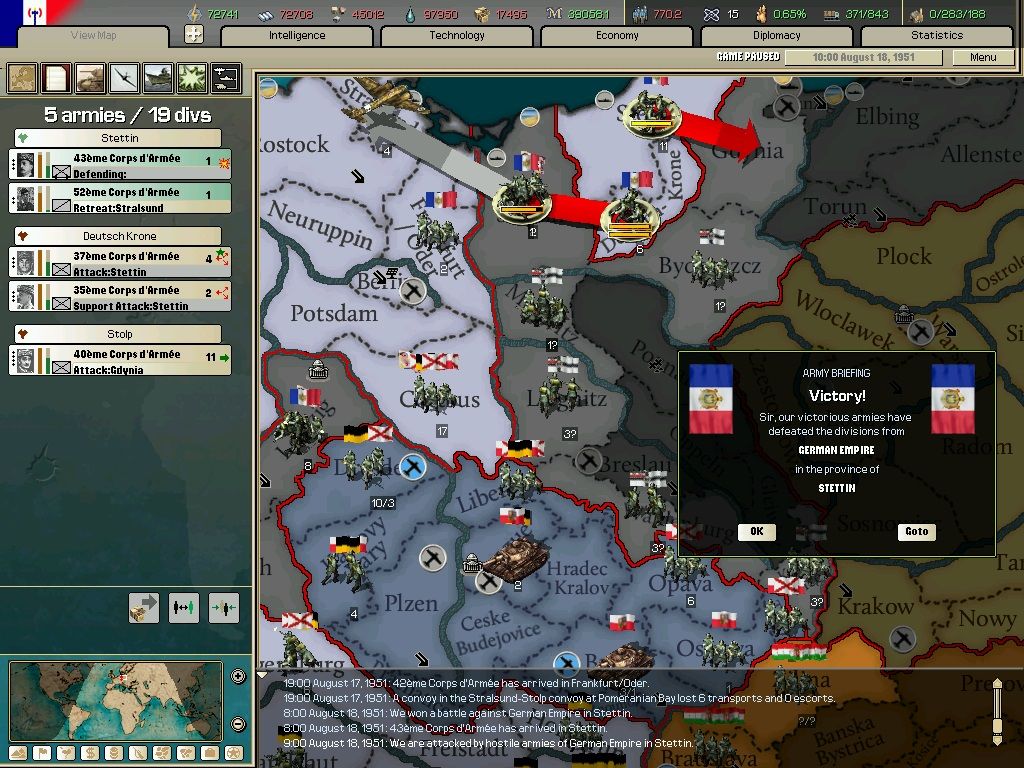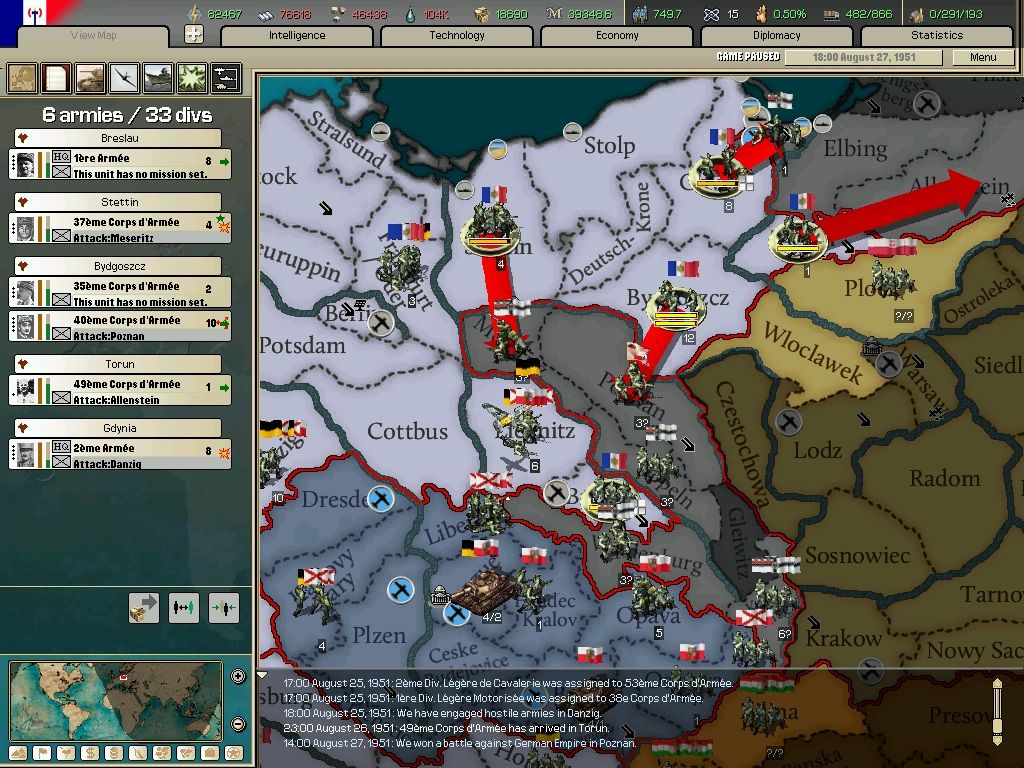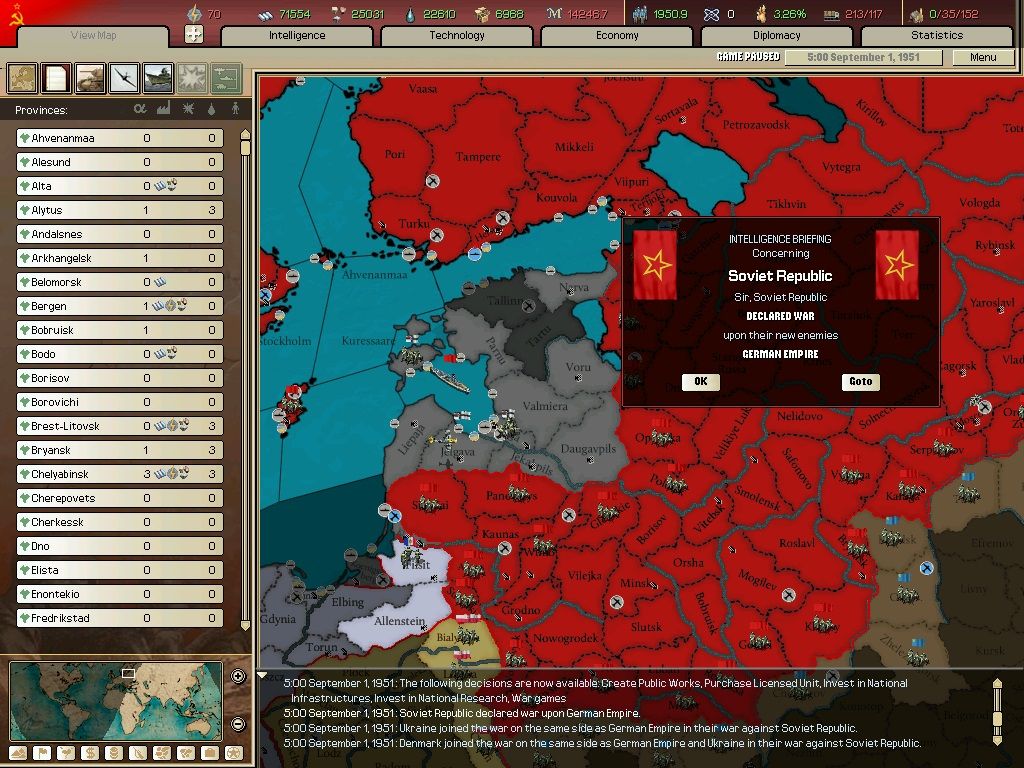Vive L'Empereur: The Third French Empire - a National France Kaiserreich AAR
- Thread starter Antonine
- Start date
-
We have updated our Community Code of Conduct. Please read through the new rules for the forum that are an integral part of Paradox Interactive’s User Agreement.
You are using an out of date browser. It may not display this or other websites correctly.
You should upgrade or use an alternative browser.
You should upgrade or use an alternative browser.
- Status
- Not open for further replies.
Vive la FRANCE!
Vive la France National, vive la France libre.
Not that I care but National France does not mean anything unless it is used to say Nationalist France 
So the next update is written up - just need to sit down and convert the screenshots to jpegs so I can upload them quickly. Without giving anything too much away, the first update you'll be seeing contains a somewhat predictable development and the next contains a real twist which the AI managed completely on its own and which should put you all on the edge of your seats with any luck 
August 1951
At the beginning of August the French forces in Prussia launched two new offensives. The first, under Maréchal Juin, was against the German lines in Cottbus in an attempt to form the hammer which would crush them against the Bohemian-Spanish anvil. However, the 1st Army of France was in a poor state to start any offensive. It had been fighting for weeks without rest and now faced heavily entrenched German forces who, though tired, were far better rested and prepared for battle. The result was a slow, metre by metre, meat grinder of a battle which would rage on for weeks.
The second French offensive, however, was by the tank divisions of Générale Dentz in a lightning offensive which raced along the coast, seizing the town of Stralsund and the major port of Rostock with its military airfields despite the equally weary state of Dentz’ troops.
From Rostock the offensive continued along the coast, seizing the port of Luneburg and the atomic-shattered naval base of Kiel before crossing the Kaiser Wilhelm Kanal (now the Kiel Canal) into Schleswig-Holstein.
Leaving behind him the besieged German and Dane garrison of Hamburg, Dentz then continued north through the undefended countryside and crushing Danish resistance at Aalborg, leaving the entire country practically defenceless.
However, things were not going entirely in favour of the League. Paris, for instance, remained badly damaged by the thermobaric attack and the general damage of war, struggling with crippled infrastructure and factories which were barely starting to return to production while the population continued to mourn their dead and the Eiffel Tower.
And in the Middle Eastern front the Ukrainians had demonstrated to the world that they were now a power to be reckoned with as they overran the last League forces in Persia and annexed the country, forcing the Shah to flee to Baghdad with less than two hundred soldiers from the entire Persian army. As a consequence of this, France finally started to pay attention to this previously neglected theatre of the war and part of the Foreign Legion would soon be dispatched to Messepotamia to aid the Arabs in launching a counter offensive.
But even more concerning than the fall of Persia was the loss of Stettin to a German counter offensive which overwhelmed the tiny, exhausted French occupation force, leaving eight French divisions in East Prussia cut off and out of supplies as a result.
Fortunately for the League, the initiative which had been lost to the Germans was finally regained by the arrival of Maréchal de Hautecloque and the 2nd Army in the east to join the faltering attack on Leipzig.
With the fresh troops brought to bear, Leipzig still fell, although it was immediately contested by a desperate German counter-offensive, which in turn allowed for reinforcements to be sent to Maréchal Juin, resulting in the capture of Cottbus.
Then, in further good news, on the 18th of August the breakout attempt by the French forces trapped in East Prussia succeeded, allowing the offensive into the rest of East Prussia to resume.
The offensives would continue through the remainder of August, meeting with rapid success as the overwhelmed Reichsheer finally started to disintegrate, leading to the capture of both Breslau and Danzig.
By the 29th of August the writing was on the wall for the German Empire. The Reichsheer was reduced to defending a tiny sliver of land in Silesia and around the ruins of Koenigsburg while refugees, the remnants of the German government and, according to rumours, the Kaiser, fled by boat and plane to the apparent safety of the Baltic Duchy which, separated from the rest of the empire by Soviet territory, was now planned to become a national redoubt from where attempts could be made to salvage as much as possible.
However, the “refuge” of the Baltic Duchy was to prove nothing of the sort. Its defences were limited to a handful of ships, a few dozen aircraft and less than 50,000 soldiers and police. In contrast, the border garrisons alone of the Soviet Republic surrounding the Duchy amounted to over 500,000 soldiers. When, on the 1st of September, the Soviets declared war on Germany, the refuge of the German government would turn into a fatal trap.
At the beginning of August the French forces in Prussia launched two new offensives. The first, under Maréchal Juin, was against the German lines in Cottbus in an attempt to form the hammer which would crush them against the Bohemian-Spanish anvil. However, the 1st Army of France was in a poor state to start any offensive. It had been fighting for weeks without rest and now faced heavily entrenched German forces who, though tired, were far better rested and prepared for battle. The result was a slow, metre by metre, meat grinder of a battle which would rage on for weeks.
The second French offensive, however, was by the tank divisions of Générale Dentz in a lightning offensive which raced along the coast, seizing the town of Stralsund and the major port of Rostock with its military airfields despite the equally weary state of Dentz’ troops.
From Rostock the offensive continued along the coast, seizing the port of Luneburg and the atomic-shattered naval base of Kiel before crossing the Kaiser Wilhelm Kanal (now the Kiel Canal) into Schleswig-Holstein.
Leaving behind him the besieged German and Dane garrison of Hamburg, Dentz then continued north through the undefended countryside and crushing Danish resistance at Aalborg, leaving the entire country practically defenceless.
However, things were not going entirely in favour of the League. Paris, for instance, remained badly damaged by the thermobaric attack and the general damage of war, struggling with crippled infrastructure and factories which were barely starting to return to production while the population continued to mourn their dead and the Eiffel Tower.
And in the Middle Eastern front the Ukrainians had demonstrated to the world that they were now a power to be reckoned with as they overran the last League forces in Persia and annexed the country, forcing the Shah to flee to Baghdad with less than two hundred soldiers from the entire Persian army. As a consequence of this, France finally started to pay attention to this previously neglected theatre of the war and part of the Foreign Legion would soon be dispatched to Messepotamia to aid the Arabs in launching a counter offensive.
But even more concerning than the fall of Persia was the loss of Stettin to a German counter offensive which overwhelmed the tiny, exhausted French occupation force, leaving eight French divisions in East Prussia cut off and out of supplies as a result.
Fortunately for the League, the initiative which had been lost to the Germans was finally regained by the arrival of Maréchal de Hautecloque and the 2nd Army in the east to join the faltering attack on Leipzig.
With the fresh troops brought to bear, Leipzig still fell, although it was immediately contested by a desperate German counter-offensive, which in turn allowed for reinforcements to be sent to Maréchal Juin, resulting in the capture of Cottbus.
Then, in further good news, on the 18th of August the breakout attempt by the French forces trapped in East Prussia succeeded, allowing the offensive into the rest of East Prussia to resume.
The offensives would continue through the remainder of August, meeting with rapid success as the overwhelmed Reichsheer finally started to disintegrate, leading to the capture of both Breslau and Danzig.
By the 29th of August the writing was on the wall for the German Empire. The Reichsheer was reduced to defending a tiny sliver of land in Silesia and around the ruins of Koenigsburg while refugees, the remnants of the German government and, according to rumours, the Kaiser, fled by boat and plane to the apparent safety of the Baltic Duchy which, separated from the rest of the empire by Soviet territory, was now planned to become a national redoubt from where attempts could be made to salvage as much as possible.
However, the “refuge” of the Baltic Duchy was to prove nothing of the sort. Its defences were limited to a handful of ships, a few dozen aircraft and less than 50,000 soldiers and police. In contrast, the border garrisons alone of the Soviet Republic surrounding the Duchy amounted to over 500,000 soldiers. When, on the 1st of September, the Soviets declared war on Germany, the refuge of the German government would turn into a fatal trap.
I know I'm slightly early since it's still an hour and three quarters until the 1st of February here but I'm sure people won't mind me being slightly early with this update.
Poor Germany... France really has got its revenge! Ukraine looks like it needs to be contained yesterday though.
France really has got its revenge! Ukraine looks like it needs to be contained yesterday though.
I know I'm slightly early since it's still an hour and three quarters until the 1st of February here but I'm sure people won't mind me being slightly early with this update.
I am disappointed ...
Just kidding, Germania delenda est
The Third French Empire is never late. Nor is it early. It strikes precisely when it means to.
Didn't expect a kill-steal by the Soviets. I probably should have, given how well it sets up a Cold War scenario after the war ends.
Didn't expect a kill-steal by the Soviets. I probably should have, given how well it sets up a Cold War scenario after the war ends.
- Status
- Not open for further replies.



